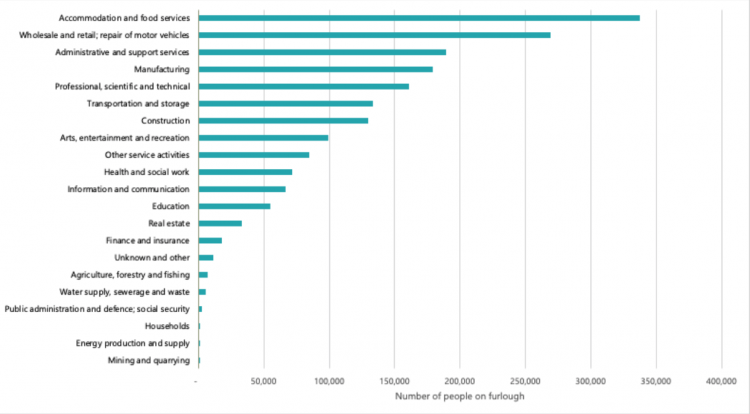Beyond furlough: why the UK needs a permanent short-time work scheme
The furlough schemes introduced at speed in March 2020 have protected millions of jobs and livelihoods during the pandemic. While far from perfect, the schemes have been a lifeline for millions of workers– supporting over 14 million people. Rather than scrapping the scheme at the end of September, the government should build on its success, bringing the UK in line with other developed economies by putting in place a permanent short-time work scheme that can protect workers and businesses at times of economic change.
The Coronavirus Job Retention Scheme (JRS) and accompanying Self Employment Income Support Scheme (SEISS), known as furlough, were introduced at speed in March 2020, following discussions with unions and business. But the UK was rare in having to start from scratch: twenty-three OECD countries already had short-time working schemes in place before the pandemic.
We know that these schemes produce results. Most importantly, they help stem the tide of unemployment, and its devastating impacts on individuals and communities. In the UK, unemployment peaked at 5.2 per cent in December 2020 – still far too high, but well below the 9 per cent the Bank of England was predicting at the start of the crisis. Because unemployment usually hits groups facing structural discrimination hardest, the schemes are a tool to stop inequalities widening. They save costs for businesses too, maintaining workers with the right skills in place, and saving on redundancy and rehiring costs. And by protecting workers and businesses, the schemes protect the economy – preventing shocks from spiralling into long-lasting recessions.
We all hope that the worst of the coronavirus crisis is over. But many industries are still facing significant restrictions; for example, 58 per cent of workers in the aviation sector are still furloughed, with flight demand at just 16 per cent of its 2019 level. At the end of June 2021 (the latest stats) there were still around 1.8 million people on the scheme. Those jobs could be vulnerable if the scheme comes to a sudden stop in September.
People on the furlough scheme by sector at the end of Jun

We know that the coronavirus pandemic won’t be the only factor driving future economic change. Climate change requires substantial changes in the way we do business, and technological change could also lead to significant economic disruption. Global financial instabilities could also lead to new recessions - even as the world seeks to recover from the pandemic.
The aim of a new short-time work scheme is not to prevent change. Rather, it is to ensure that change happens in a way that protects workers and avoids the redundancies and company failures that a temporary period of support could prevent.
Our new report [link] sets out how a new permanent scheme could work. It should build on the success of the furlough scheme in working with unions and business and be designed and governed by a tri-partite panel. It should draw on best practice from schemes around the world in ensuring consultation with workers is a pre-condition for businesses wishing to access the new scheme; flexibility in how the scheme is used; protection for workers’ income, and that its use is a trigger for businesses to improve their working practices.
A new scheme must also put a significant emphasis in ensuring furloughed workers receive access to training, as part of wider government efforts to invest in skills fit for a changing economy.
Furlough has been a lifeline for millions of working people during the pandemic. Now is the time for the government to build on the success of furlough with a permanent short-time working scheme – not throw away its good work.
Stay Updated
Want to hear about our latest news and blogs?
Sign up now to get it straight to your inbox
